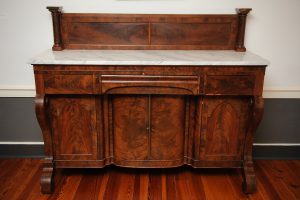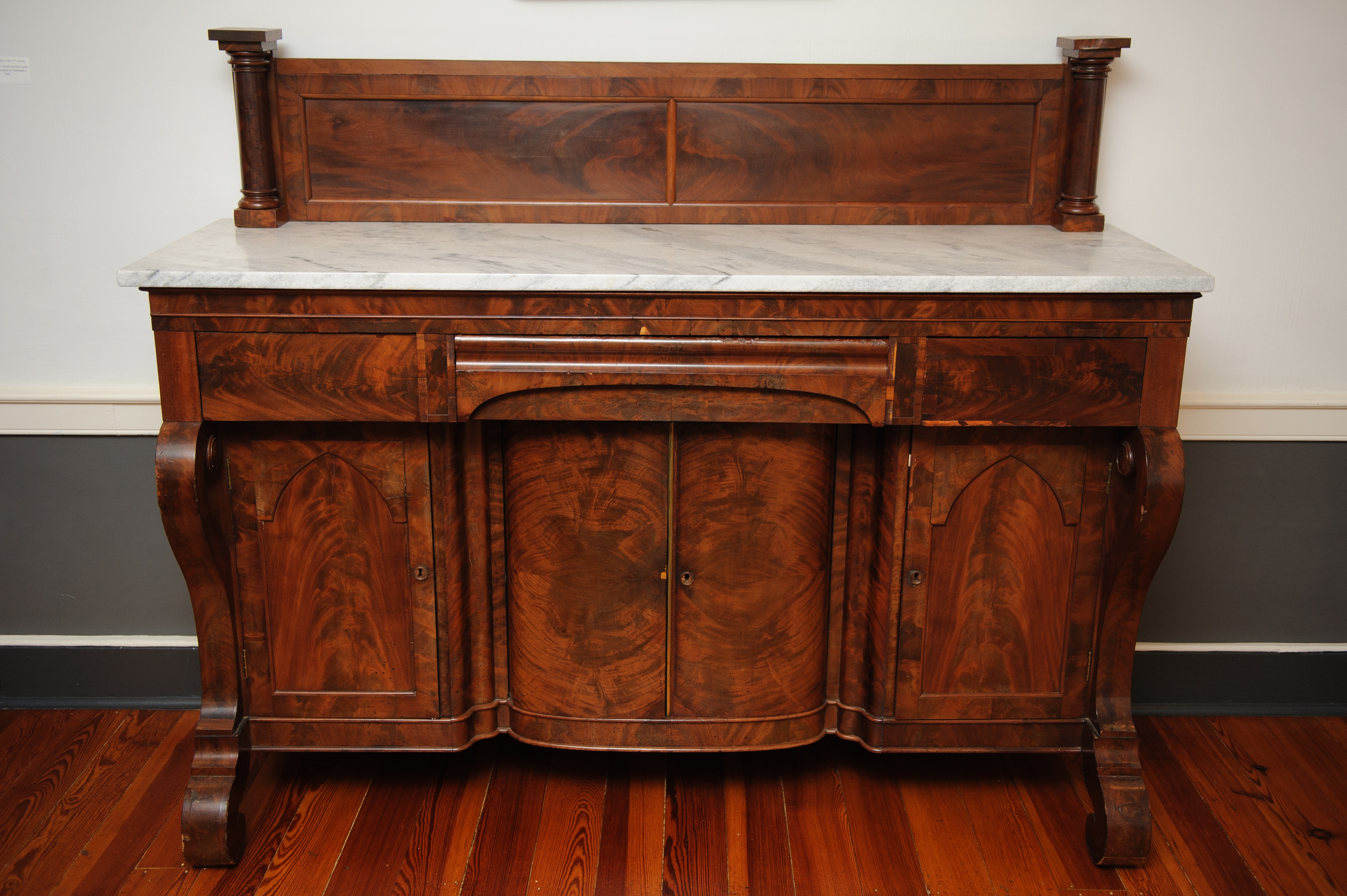
The dining room of the Gorgas House Museum features a piece of furniture that was an essential part of 19th century entertaining. Evolving from a simple chest to an enormous, architectural status symbol, the sideboard always served the purpose of holding dishes and food, eventually becoming a more elegant piece that displayed and stored dishes and utensils. The sideboard in the Gorgas House is no exception to this elegance as it features a mahogany-veneered construction in an American Empire style with a white marble top and ‘S’ scrolled side stiles and feet.
The Gorgas House sideboard was originally owned by the Gayle family. Amelia Gorgas’ father, John Gayle, served as governor of Alabama from 1813-1835, as well as serving in the U.S. House of Representatives from 1847-1849. John Gayle’s home was a center of political entertainments and this sideboard would have played a part in hosting people from Alabama and the nation. At the outbreak of the Civil War in 1861, the sideboard sat in the Gayle family home near Mobile.
During the Union occupation of Mobile the family fled to Greensboro, Alabama. When they returned home after the war, the family found their house had been looted and their furniture, including the sideboard, was gone. Fifteen years later, Amelia Gorgas visited Mobile and a second-hand furniture shop where she found her family’s stolen sideboard. Amelia purchased it back for $4.50 and had it shipped up river to Tuscaloosa where it has sat in the Gorgas House ever since.
The Gorgas House Museum is the oldest structure on The University of Alabama campus. Built in 1829, the building served as a dining hall, hotel and residence for the University’s steward. Converted into a faculty residence in the 1840s, it was one of seven buildings to survive the Civil War. The building also housed the University’s hospital, first post office and first study hall for female students. Josiah Gorgas served as the University’s eighth president and his wife, Amelia, was the University’s librarian, nurse matron and postmistress. The Gorgas family lived in the home from 1879-1953 and many original Gorgas family objects are on display in the museum.
Lydia Ellington Joffray, Gorgas House Museum director, provided the above information.
